South Korean Beverages: Basic Overview
Common Ingredients
Common Preparing Methods
Key Taste
Drinking Etiquette
Culinary Festivals
Influence and Fusion
Classifications of South Korean Beverages
-
Alcoholic
South Korean alcoholic beverages reflect the country’s agricultural heritage.
They predominantly use ingredients like rice, barley, and local fruits to make these drinks.
Many of them are associated with social customs, celebrations, and daily life.
-
Non-Alcoholic
The non-alcoholic beverages in South Korea are diverse in types, such as teas, grain-based drinks, juices, etc.
Many kinds of tea are known for their health benefits, drawing on centuries-old wisdom about the medicinal properties of natural ingredients.
South Korean beverages are distinguishing themselves as a core element of the nation’s cultural and culinary heritage.
Known for its long-standing love affair with alcohol, South Korea offers a ton of delicious, flavorful, and aromatic alcoholic drinks. Unlike the fancy grape wines of Westerns, the Koreans make their wines from rice and local fruits – the signature ingredients of Asian cuisine.
With a profound history rooted in alcohol consumption during festive and social gatherings, Korean drinks range from enchantingly aromatic alcoholic selections to soothing and diverse non-alcoholic options, such as tea, milk, coffee, etc.
I will give you an overview of the traditional drinking culture in South Korea and the global popularity of local beverages. Next, take a look at the 25 popular drink options South Koreans enjoy.
Moreover, you can also learn more about the drink culture of this country and its tea art. Now, what are you waiting for? Let’s start this amazing journey!
25 Popular South Korean Beverages with Filters
To comprehend the beauty of South Korean beverages, take a look at the 25 options in my guide. Use interactive filters to navigate this section more easily in terms of popularity, ingredients, tastes, and preparation methods.
There are additional filters based on traditional, national, exotic, fusion, and street beverage labels for ease of reference.
Soju
- Alcoholic
- National
- Traditional
Soju is Korea’s national liquor. This inexpensive, distilled drink comes in gleaming green bottles, and it is available in nearly every dining and drinking occasion in Korea.
Soju is made from fermented rice, although it can also be made from wheat, barley, sweet potatoes, or tapioca.
This best-selling spirit is generally low in alcohol and has a mild, slightly sweet flavor similar to watered-down vodka. There are also numerous cocktails that include soju.
It is thought to have first arisen when the Mongols taught the Koreans how to manufacture alcohol in the 13th century. Today, Chamisul and Chum Churum are the two major soju brands that dominate the Seoul market.
Makgeolli
- Alcoholic
- Traditional
Known as the oldest alcohol in Korea, Makgeolli (or Takju or farmer’s drinks), is truly a must-try when visiting this country.
Locals make the mixture from rice, fermenting it using nuruk (a Korean fermentation starter) to produce a carbonated mixture. In South Korea, Makgeolli usually comes in a metal kettle for serving and is often consumed in a bowl.
It doesn’t have a clear and crisp appearance like soju and other modern liquors. Instead, it has a milky white tint and a mildly sweet taste.
People often order this alcoholic drink while enjoying a plate of pajeon – one of the most famous street foods in Korea.
Bokbunja-Ju
- Alcoholic
- Exotic
- Traditional
Bokbunja-ju in Korea is made from bokbunja berries, which are fermented in water. Some variations may come with rice or reishi extract for extra flavors. This native berry gives the wine a signature blood-red color and sweet berry flavor.
With an alcohol content ranging between 15% and 19%, Bokbunja-ju has a medium alcoholic drink. This wine is often served chilled and pairs nicely with meat, seafood, and any other traditional Korean delights.
Bokbunja berry is also known for its health benefits. Research has shown that this drink is high in vitamin C, vitamin A, and antioxidants.
Baekse-Ju
- Alcoholic
- Traditional
Baekse-ju is a Korean fermented glutinous rice drink. This herbaceous yellow wine is prepared with rice and various roots and herbs; the most notable one is ginseng. Other aromatics, such as wolfberry, ginger, cinnamon, and licorice, will vary depending on the brand.
Baekse-Ju was initially released in 1992 under the name Jibong’yuseol. This fancy rice wine is much pricier than soju and beer due to the use of ginseng.
This rice wine usually has a mellow flavor accompanied by a touch of ginseng.
Sikhye
- Non-Alcoholic
- Traditional
Sikhye is a non-alcoholic sweet drink made with rice, barley malt powder, sugar, and pine nuts. The subtly sweet taste of sikhye can definitely mesmerize you on the first try.
This dessert drink is usually drunk at Korean festivals, such as New Year’s Day (Seollal) and the Korean Harvest Festival. Locals often drink it after a full meal at a restaurant or after hitting the saunas.
Sikhye is usually known by other names like Dansul or Gamju, often sold in ready-made cans, glass jars, or plastic bottles. At the bottom of most canned Sikhye, there is always a remnant of cooked rice.
Sujeonggwa
- Non-Alcoholic
- Traditional
Sujeonggwa is a Korean non-alcoholic beverage, often served as a dessert or a palate cleanser. The primary ingredients are dried persimmons, cinnamon, and ginger, which are brewed together to create a rich infusion.
It is a cold, sweet beverage with a reddish-brown color and mildly spicy taste. The locals usually serve sujeonggwa cold with pine nuts on top or pair it with kkultara, a Korean dragon beard candy.
Sujeonggwa is especially popular during Korean festivities and holidays, such as the Lunar New Year and Chuseok (Korean Thanksgiving).
Misugaru
- Non-Alcoholic
- Traditional
Misugaru, or misu, is a popular multi-grain drink in Korea that blends together 7 to 10 different types of grains, which can be either roasted or steamed.
It’s an ideal beverage to enjoy during the summer months. Commonly, Koreans consume it as a breakfast or snack option.
Misugaru is a term that refers to the powdered form, while Misu denotes the liquid version of the drink. To prepare the drink, the powder is mixed with water or milk, and sweeteners such as sugar or condensed milk can be added for extra flavor.
Dalgona Coffee
- Non-Alcoholic
- Fusion
- Street Beverages
Dalgona coffee is a frothy whipped coffee served with milk. You can make this coffee yourself by whipping equal parts of instant coffee, sugar, and hot water until it has a caramel-like color and a frothy texture. The drink usually has a taste similar to honeycomb toffee.
Although many people believe Dalgona coffee has been a mainstay in Korean cuisine for a long time, this is simply not true.
This drink was first created in Macau in 1997. It only started to gain worldwide fame around January 2020 on TikTok and YouTube amid the Coronavirus pandemic.
Maekju
- Alcoholic
- Street Beverages
- Traditional
Maekju is a word for Korean beer. This alcoholic beverage was first brought to Korea by Europeans in the early 20th century.
Korean beer is known for its light and crisp flavor profile, making it a preferred accompaniment to various Korean dishes. It’s a staple in the country’s drinking culture, often enjoyed in restaurants, bars, or households.
Popular domestic brands like Cass, Hite, and OB. Additionally, the craft beer scene in big cities like Seoul is expanding, providing local and international craft brews.
Somaek
- Alcoholic
- Street Beverages
- Traditional
Somaek is a popular alcoholic beverage in South Korea, featuring a blend of soju and maekju (beer).
Typically, the ratio of soju to beer varies according to personal preference, but a common mix is one part soju to two or three parts beer.
The taste is a balanced blend of the two beverages—less potent than straight soju and more dynamic than beer alone.
The name “somaek” itself is a combination of “soju” and “maekju.” It’s a common choice in social settings or shared dining contexts.
Omija-cha
- Non-Alcoholic
- Exotic
- Traditional
Omija berry or magnolia berry is called “five-flavor berry” in Korean since it is said to have five flavors: sweet, sour, salty, bitter, and spicy. Because omija-cha contains this unique fruit, it has a vibrant red color.
The locals love to enjoy this delicious tea with some honey. In some cases, they will flavor it with mung beans or flowers to make a variety of punches.
This tea is ideal for when you start to feel a cold or the flu coming on since it has various therapeutic characteristics that help prevent colds.
Yulmu-cha
- Non-Alcoholic
- Traditional
Yulmu-cha, also known as Job’s Tears Tea, is a traditional Korean tea made from the grains of Job’s Tears, a type of cereal plant.
The tea has a mild, slightly nutty, and mildly sweet flavor with a creamy texture. Yulmu-cha is enjoyed both hot and cold and is a comforting choice, especially during colder months.
Bori-Cha
- Non-Alcoholic
- Traditional
Bori-cha, or Korean barley tea, has a characteristic toasty, nutty flavor. This Asian recipe usually calls for roasted barley seed. You can enjoy this caffeine-free drink in either hot or cold seasons.
There are several brands of barley tea available all around this country, some may come in a tea bag.
Bottled barley tea is typically offered in supermarkets, convenience shops, and vending machines. During the winter, hot bori-cha will be sold in heat-resistant PET bottles.
Insam-cha
- Non-Alcoholic
- Traditional
Insam-cha, aka Korean ginseng tea, is a traditional herbal tea made from ginseng, a root famed for its numerous health benefits.
The tea has a slightly bitter and earthy taste, often sweetened with honey or jujube.
Consumed for its energizing properties and potential to boost the immune system, insam-cha is particularly popular during colder months or as a revitalizing tonic.
Maesil-cha
- Non-Alcoholic
- Traditional
Don’t miss out on maesil-cha, a famous plum tea of Koreans.
Each Korean household has a different way of preparing maesil-cha, but most people will ferment the plums to turn them into thick syrup. Then, they will mix this maesil syrup with hot water to make a sweet, relaxing tea.
Maesil will never go bad in its syrup form. But if you ferment the plums for too long, they will eventually become alcoholic, resulting in maesil-ju.
Gukhwa-cha
- Non-Alcoholic
- Traditional
Gukhwa-cha, known as Korean chrysanthemum tea, is a fragrant herbal tea made from dried chrysanthemum flowers. It has a delicate floral aroma and a light taste.
To make this drink, locals will dry white and yellow chrysanthemum blooms, steep them in honey for 1 month and brew them as tea.
Since chrysanthemum flowers are so beautiful, chrysanthemum tea is also visually stunning. Plus, these blooms give the tea a delicate floral flavor that you can hardly resist. Often enjoyed hot, Gukhwa-cha is a popular choice for its calming properties.
Yuja-cha
- Non-Alcoholic
- Exotic
- Traditional
Yuja-cha, also known as yuzu tea, is a popular Korean citrus tea made from the yuzu fruit. It was a China-originated fruit and was transported to South Korea during the Tang dynasty.
This tea is super easy to make at home. All you have to do is mix yuzu marmalade, which includes the fruit’s peel, juice, and zest, with hot water. This tea is recognized for its tangy flavor.
The beverage has long been advertised as a cure-all for colds, flu, and sore throats, ideal for winter months.
Oksusu-cha
- Non-Alcoholic
- Traditional
Oksusu-cha, a Korean corn tea, is made from corn kernels, corn silk, or a combination of both. Typically, locals will roast the grains before infusing the flavor in a heated water pot.
It has a slightly sweet and nutty flavor. This tea is naturally caffeine-free, making it a popular beverage choice at any time of the day.
Oksusu-cha is enjoyed both hot and cold, providing a comforting warmth during winter months and a refreshing drink in the summer.
For those seeking a convenient option, commercial corn tea can be found in yellow plastic bottles.
Maesil-Ju
- Alcoholic
- Exotic
- Traditional
Maesil-ju is a popular Korean plum liquor made using ripe, firm yellow plums, known locally as hwangmae.
The production process involves steeping dried plums with soju for over 100 days in a clean container, followed by the addition of sugar for sweetness.
The beverage is typically allowed to mature for an additional three to six months to enhance its flavor.
Hwachae
- Non-Alcoholic
- Traditional
Hwachae is a generic name for non-alcoholic fruit punches. There are more than 30 variations of this fruity drink.
Still, they all use honeyed water or honeyed magnolia berry juice as a base and various fruits or edible flowers as toppings.
Among them, subak hwachae (made with watermelon) is the most popular version. Hwachae is particularly popular during spring and summer for its cooling and hydrating properties.
Banana Flavored Milk
- Non-Alcoholic
- Street Beverages
- Traditional
Banana flavored milk is an iconic beverage in South Korea. It has a creamy taste with a banana hint.
Nowadays, approximately one million bottles are sold every day in South Korea, attracting many tourists because of the cute short bottle design. There are different brands producing this beverage, with the Binggrae brand being one of the most famous choices.
This drink has always been a national favorite since its introduction in 1974 when bananas were still considered a luxury item.
Aloe Vera Juice
- Non-Alcoholic
- Exotic
- Traditional
Aloe vera juice is a favored beverage in South Korea, which is made from the gel of the aloe vera plant. Its taste is mildly sweet, and it has a slightly viscous texture.
Typically packaged in green plastic bottles, this beverage is loved due to its refreshing and hydrating characteristics.
Milkis
- Non-Alcoholic
- Street Beverages
- Traditional
Milkis, also known as milk and yogurt soda, is one of the most well-known South Korean non-alcoholic soft drinks.
This fizzy soft drink contains carbonated water, milk, and sugar. It also comes in a wide selection of fruity flavors, including melon, mango, peach, banana, orange, apple, and strawberry.
This iconic refreshment is sold at nearly every eclectic grocery store or convenience store in the country. The most iconic manufacturer of Milkis has to be Lotte Chilsung.
It made its first appearance in 1989, but it managed to maintain its popularity until this very day.
Chilsung Cider
- Non-Alcoholic
- Street Beverages
- Traditional
Chilsung Cider is a popular carbonated soft drink with a clear, sparkling appearance in South Korea. Its taste is crisp and refreshing.
As one of South Korea’s most beloved sodas, it offers a sweet, lemon-lime flavor that makes it a favored choice for quenching thirst.
Not only is Chilsung Cider the perfect refreshment during the hot summer days, but it is also a necessary base for many delectable cocktails.
Chilsung Cider has been a staple in the Korean market since its introduction in 1950, maintaining a loyal consumer base with its iconic, bubbly zest.
Bacchus
- Non-Alcoholic
- Traditional
Bacchus is a well-known energy drink in South Korea. Water, corn syrup, and sugar make up the majority of the drink, but the secret ingredient here is taurine (a conditional amino acid that can affect mental and athletic performance).
It comes in a small, convenient bottle that you can find at almost any convenience store.
Bacchus was first advertised as a hangover cure in 1963 by Dong-A, a pharmaceutical business. Today, it’s a well-known energy booster, especially for students and working professionals seeking a quick source of improving alertness and stamina.
What Is the Drink Culture in Korea?
There are four things to note about Korean drinking culture.
How Is The Art of Korean Tea?
Steeped in history and tradition, the art of Korean tea is a captivating journey into the rich culture of Korea. Here are four main characteristics of these teas.
Now that you have reached the end, please like and share it with your friends. And if you have any more questions about Korean cuisine culture or Korean refreshments, I’d be more than happy to answer them all!




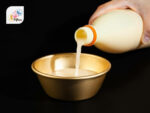


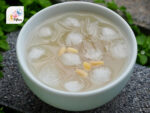

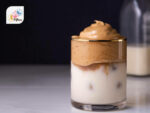
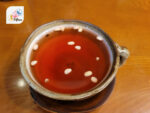

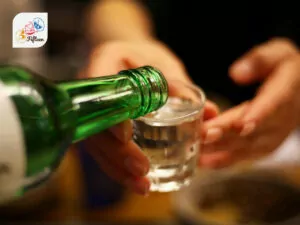
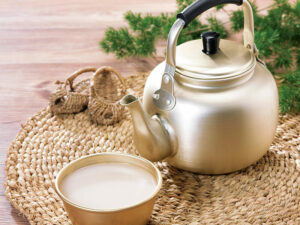
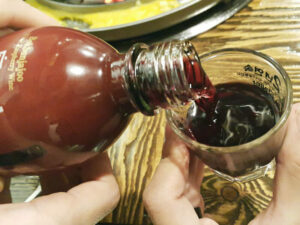
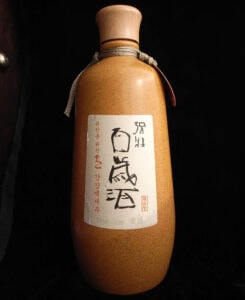
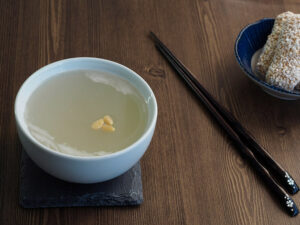
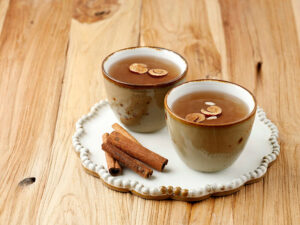
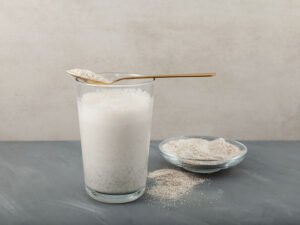
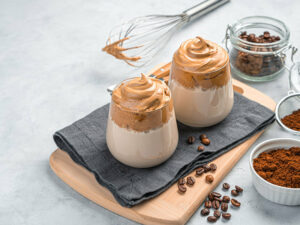

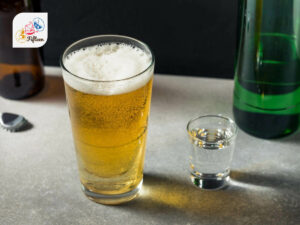
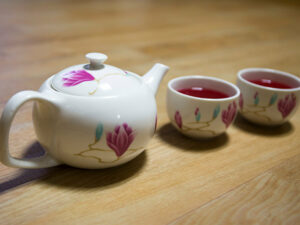
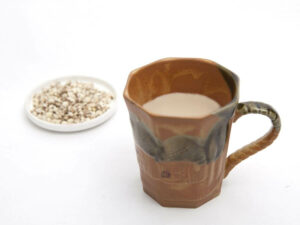
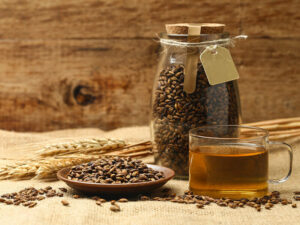
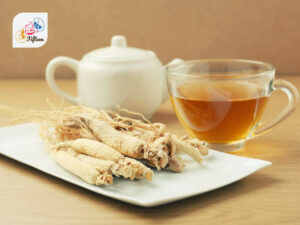
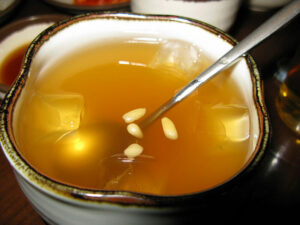
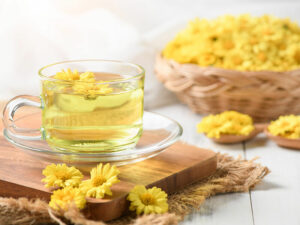
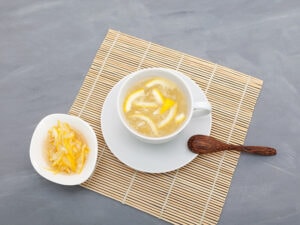
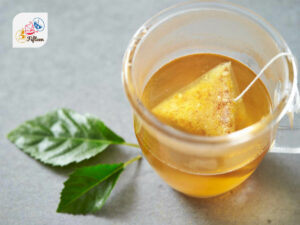
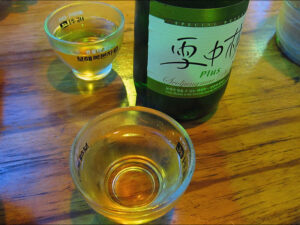
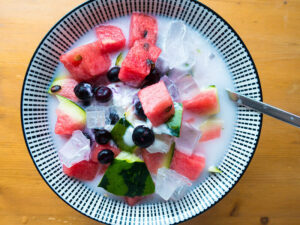
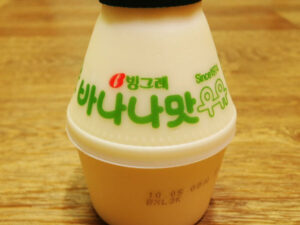
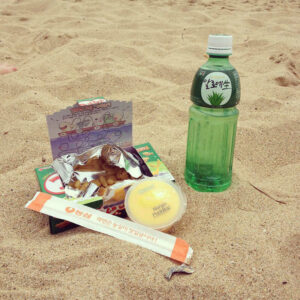
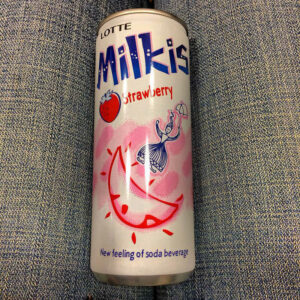
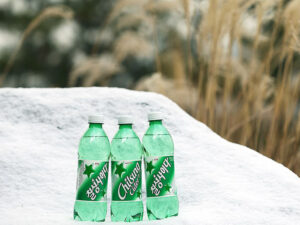
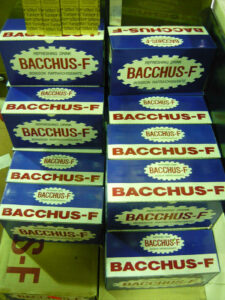

Jamie Scott
Editor in Chief, Senior Content Writer
Expertise
Home Cooking, Meal Planning, Recipe Development, Baking and Pastry, Food Editor, Cooking-video Maker, Western Food Evaluation Expert
Education
Le Cordon Bleu College of Culinary Arts
Local Community College, New York, NY
Jamie Scott is a skilled culinary expert and content creator specializing in Western cuisine. With over 15 years in the culinary field and formal training from Le Cordon Bleu, Paris, Jamie deeply understands how to blend nutrition with delicious flavors. His passion for cooking matches his commitment to making healthy eating accessible and enjoyable.
On Fifteen.net, Jamie brings a fresh perspective to classic dishes and beverages, offering readers insightful recipes, cooking tips, and a fresh view on meal planning that emphasizes taste, health, and simplicity.